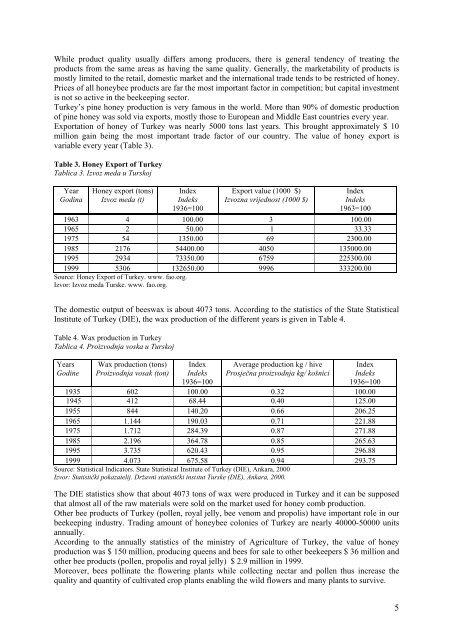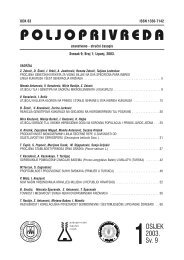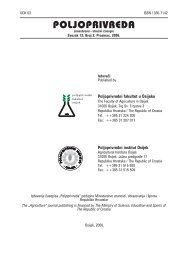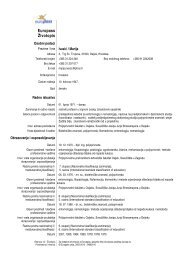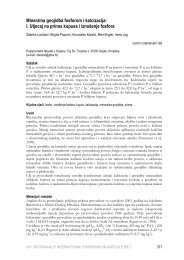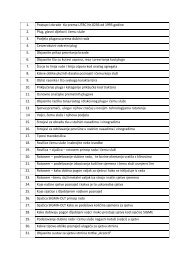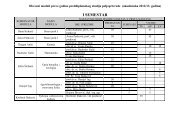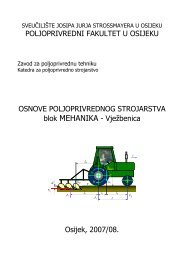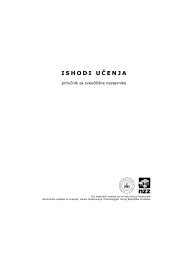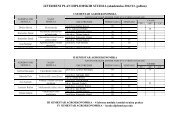1 THE GENERAL APICULTURAL SITUATION OF TURKEY ...
1 THE GENERAL APICULTURAL SITUATION OF TURKEY ...
1 THE GENERAL APICULTURAL SITUATION OF TURKEY ...
Create successful ePaper yourself
Turn your PDF publications into a flip-book with our unique Google optimized e-Paper software.
While product quality usually differs among producers, there is general tendency of treating the<br />
products from the same areas as having the same quality. Generally, the marketability of products is<br />
mostly limited to the retail, domestic market and the international trade tends to be restricted of honey.<br />
Prices of all honeybee products are far the most important factor in competition; but capital investment<br />
is not so active in the beekeeping sector.<br />
Turkey’s pine honey production is very famous in the world. More than 90% of domestic production<br />
of pine honey was sold via exports, mostly those to European and Middle East countries every year.<br />
Exportation of honey of Turkey was nearly 5000 tons last years. This brought approximately $ 10<br />
million gain being the most important trade factor of our country. The value of honey export is<br />
variable every year (Table 3).<br />
Table 3. Honey Export of Turkey<br />
Tablica 3. Izvoz meda u Turskoj<br />
Year<br />
Godina<br />
Honey export (tons)<br />
Izvoz meda (t)<br />
Index<br />
Indeks<br />
1936=100<br />
Export value (1000 $)<br />
Izvozna vrijednost (1000 $)<br />
Index<br />
Indeks<br />
1963=100<br />
1963 4 100.00 3 100.00<br />
1965 2 50.00 1 33.33<br />
1975 54 1350.00 69 2300.00<br />
1985 2176 54400.00 4050 135000.00<br />
1995 2934 73350.00 6759 225300.00<br />
1999 5306 132650.00 9996 333200.00<br />
Source: Honey Export of Turkey. www. fao.org.<br />
Izvor: Izvoz meda Turske. www. fao.org.<br />
The domestic output of beeswax is about 4073 tons. According to the statistics of the State Statistical<br />
Institute of Turkey (DIE), the wax production of the different years is given in Table 4.<br />
Table 4. Wax production in Turkey<br />
Tablica 4. Proizvodnja voska u Turskoj<br />
Years<br />
Godine<br />
Wax production (tons)<br />
Proizvodnja vosak (ton)<br />
Index<br />
Indeks<br />
1936=100<br />
Average production kg / hive<br />
Prosječna proizvodnja kg/ košnici<br />
Index<br />
Indeks<br />
1936=100<br />
1935 602 100.00 0.32 100.00<br />
1945 412 68.44 0.40 125.00<br />
1955 844 140.20 0.66 206.25<br />
1965 1.144 190.03 0.71 221.88<br />
1975 1.712 284.39 0.87 271.88<br />
1985 2.196 364.78 0.85 265.63<br />
1995 3.735 620.43 0.95 296.88<br />
1999 4.073 675.58 0.94 293.75<br />
Source: Statistical Indicators. State Statistical Institute of Turkey (DIE), Ankara, 2000<br />
Izvor: Statistički pokazatelij. Državni statistički instıtut Turske (DIE), Ankara, 2000.<br />
The DIE statistics show that about 4073 tons of wax were produced in Turkey and it can be supposed<br />
that almost all of the raw materials were sold on the market used for honey comb production.<br />
Other bee products of Turkey (pollen, royal jelly, bee venom and propolis) have important role in our<br />
beekeeping industry. Trading amount of honeybee colonies of Turkey are nearly 40000-50000 units<br />
annually.<br />
According to the annually statistics of the ministry of Agriculture of Turkey, the value of honey<br />
production was $ 150 million, producing queens and bees for sale to other beekeepers $ 36 million and<br />
other bee products (pollen, propolis and royal jelly) $ 2.9 million in 1999.<br />
Moreover, bees pollinate the flowering plants while collecting nectar and pollen thus increase the<br />
quality and quantity of cultivated crop plants enabling the wild flowers and many plants to survive.<br />
5


